55.7" so far this winter in the Twin Cities.
2/10ths of an inch of snow fell on Thursday.
11" snow on the ground at MSP International Airport.
3.51" liquid precipitation since December 1 in the cities. Normal value is 1.92" (one of many reasons why the spring flood threat is higher than usual. Details from the National Weather Service below).
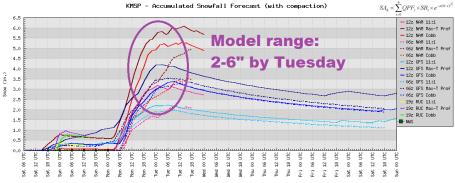 A Couple of (Minor) Clippers
A Couple of (Minor) Clippers. Tonight's clipper may brush the metro with a coating, maybe 1/2" or so (2-5" closer to Duluth and northern Wisconsin). Confidence level is still low, but a second clipper - deeper into the cold air - may produce a burst of an inch or two Sunday night.
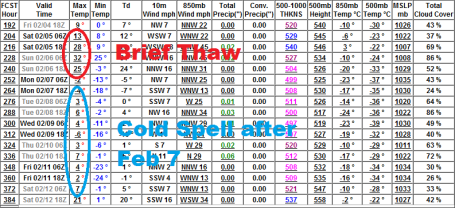 Temperature Roller Coaster
Temperature Roller Coaster. The (somewhat unreliable) GFS
model is hinting at a quick thaw the first weekend in February - followed by a cold stretch from Feb. 7 - 11. Not as cold as last week, but cold enough to get your attention.
Amazing Snow Statistics:
New York City (Central Park): 19"
New York has seen 36" in January (3 times more than the Twin Cities).
The Big Apple has been buried under 49.4" (nearly 40" more than usual so far this winter).
5 of the Top 10 snowstorms for New York have struck in the last 5 years.
At the height of the storm Wednesday night snow was falling at the rate of 5"/hour on Islip (Long Island) with thunder and lightning.
Hartford, Connecticut: 48" (snowiest month on record).
Syracuse, New York: 113" so far this winter (48" more than normal, to date).
The Big (Snowy) Apple. New York City has experienced the snowiest January on record, thanks to last night's flaky fury.
The New York metro area has picked up 3 to 3 1/2 times more snow than the Twin Cities so far this month!
New York City Snowfall (Central Park)
 Snowy Trends
Snowy Trends. From Jeff Masters and his
Wunderblog has some insights into an apparent trend toward snowier winters for much of the northeast. He writes: "
Remarkably, five of New York City's top-ten snowfalls of the past 142 years have occurred in the past decade (highlighted in the list.)" Weather data in Central Park dates back to 1869.
*****************MONTHLY SNOWFALL RECORDS******************
..SNOWIEST JANUARY ON RECORD
..CLIMATE SITE... ...OLD RECORD... ...JANUARY 2011 TOTAL*
CENTRAL PARK 27.4 INCHES (1925) 36.0 INCHES
NEWARK 31.6 INCHES (1996) 37.3 INCHES
LAGUARDIA 27.6 INCHES (1996) 32.4 INCHES
BRIDGEPORT 26.2 INCHES (1965) 41.8 INCHES
ISLIP 21.5 INCHES (2005) 34.2 INCHES
*MONTHLY SNOWFALL TOTALS AS OF 7 AM JANUARY 27 2011
(Thanks to meteorologist Judy Gaddy from WeatherBug for this update. Yes, I'm feeling [a little] better about our Minnesota winter).
Brooklyn Time Lapse. John Huntington did a very good job capturing Wednesday night's snow bliztz, which buried the New York City metro area under 19" of snow. Video courtesy of Vimeo.
How Much Fell? The heaviest amounts (15-18") fell from central New Jersey and the New York City metro area to Hartford, Connecticut. Image courtesy of the National Weather Service and
Twitpic.
 Record Snow
Record Snow. Check out Ham's
interactive site for details on the record-breaking snowstorm that just pummeled the northeast.
Highway Conditions. From the University of Wisconsin weather department, a potentially useful graphic that displays real-time highway conditions: wet, slushy, icy, snow-covered, etc. Check out the latest here.
A Rising Spring Flood Risk. The National Weather Service has issued an updated spring flood
outlook for locations across the upper midwest.
Above normal rainfall early in the fall, combined with snowfall that was above normal for the period from November through mid-January, has led to the potential for significant flooding along many rivers in Minnesota and western Wisconsin.
The text of the
Spring Flood Outlook details a probabilistic forecast, showing percent chances of reaching critical stages at various forecast points along area rivers. There are several factors that will go into determining the eventual river crests this spring at these locations. These factors include the amount of precipitation that falls over the area this spring, how fast the temperatures warm up during the coming months, and any ice jams that may form along the rivers.
(I'm not a flood forecaster - hydrology is literally a science within a science, with thousands of variables to consider. But based on the sheer amount of snow on the ground, and the water tied up that snow pack [as much as 6" over western and southwestern MN] the risk for flooding in March and April is very significant. Probably not a rerun of 1997, but potentially worse than the last few years - due to the quantity of snow, coupled with the potential for a rapid thaw, coupled with heavy rain).
An Upside-Down Winter. Since mid November much of eastern Canada and Greenland has been trending much warmer than average, a symptom of the second wintry NAO (North American Oscillation) in a row - something we've never seen before. One theory: unusually warm water in the Arctic region is being tranferred to the atmosphere, resulting in warm high pressure over the Arctic, a holding pattern that has forced cold regions of low pressure thousands of miles south - a complex domino effect. Map courtesy of NCEP/NCAR and the Weather Channel.
Spectacular Japanese Volcanic Eruption. Japan is on alert, after the biggest volcanic eruption in 50 years. The violent upward motion produced a plume of ash and steam extending nearly 100,000 feet into the stratosphere, rapidly rising, super-heated air sparking thunder and lightning. A
story from the U.K's Daily Mail:
"A one-mile cordon has been established around a volcano on Mount Kirishima after it erupted scattering rocks and ash across southern Japan and sending smoke billowing 5,000ft into the air. The Meteorological Agency raised the volcanic alert to level 3 as ash today continued to spew from Shinmoedake on Japan's southernmost main island of Kyushu, and residents have been banned from going within a mile of the volcano following its worst eruption in 50 years."
The First Weather Computer. The Weather Channel's Stu Ostro has an excellent
post focused on weather models. They've come a long way since the first "Eniac" weather model, which took up an entire room (photo above). Ostro laments the current state of the models, which have been especially unreliable in recent months. I agree. Is it La Nina, or possibly a side-effect of the NAO, the North American Oscillation, which has warmed the Arctic region and Greenland but shoved unusually cold, snowy weather south - into the lower 48 states? Good question. Bottom line: there is SOME accuracy out to about 15-20 days, but anything beyond 4-5 days is a semi-educated guess, a TREND. When jet stream winds are howling this fast, the system is fundamentally unstable, with new factors ranging from chilly Pacific ocean water to a warming Arctic - the long range outlook is even more unreliable than usual.
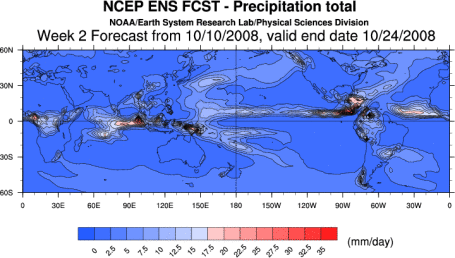 Why The Computer Models Have Been More Unreliable This Winter?
Why The Computer Models Have Been More Unreliable This Winter? Blame La Nina! The Capital Weather Gang in Washington D.C. interviewed Dr. Louis Uccellini, Director of NOAA's NCEP division - in charge of the supercomputers that simulate future weather around the planet. An excerpt of an interesting
article at washingtonpost.com: "
My sense is that last year's very strong El Nino, and very strong southern jet stream... that the way the waves [of low pressure] developed in the southern stream and remained essentially coherent along the southern states, lent itself to a more consistent forecast from run to run." Simply put, Uccellini said, the models don't have as much skill at dealing with storms that originate from within the northern branch of the jet stream versus southern stream systems. "I've not been surprised about the challenges in predictions of these storms versus last year," he said."
Record Level Of Stress Found In College Freshmen. Having just put 2 sons through Penn State and the U.S. Naval Academy, I can confirm this headline, at least in our own family, and every other family I know with kids in college. Freshman year is always the most challenging, and stress levels are reaching new heights, according to this
article in the New York Times: "
The emotional health of college freshmen — who feel buffeted by the recession and stressed by the pressures of high school — has declined to the lowest level since an annual survey of incoming students started collecting data 25 years ago. In the survey, “The American Freshman: National Norms Fall 2010,” involving more than 200,000 incoming full-time students at four-year colleges, the percentage of students rating themselves as “below average” in emotional health rose. Meanwhile, the percentage of students who said their emotional health was above average fell to 52 percent. It was 64 percent in 1985."
Enjoying The Snow ( and HDTV) On Your Outdoor Patio. The New York Times has an
article about die-hard winter weather lovers who don't cower indoors when the flakes fly: “You have to extend the season,” said Scott Walsh of Long Island City, Queens. His backyard wintertime plans include drinking cocoa, building an igloo and an ice rink, and grilling for guests. Scott would be right at home here in Minnesota, where many brave souls embrace the cold and snow.
Mystery Solved? WSVN-TV in Miami
reports on the grand piano left on a small reef just offshore: “
A grand surprise is striking a chord on a northeast Miami-Dade sand bar," WSVN-TV anchor Richard Lemus said this morning in introducing a peculiar story about a grand piano that had mysteriously appeared in the middle of Biscayne Bay. “It’s probably the weirdest thing I’ve seen out here,” a local captain told reporter Andre Hepkins."
Temperature Of Coffee Expected To Rise Nine Degrees By End Of 21st Century
WASHINGTON, DC—A report released by the Union of Concerned Dietitians stated that not only will the temperature of coffee increase by nearly nine degrees by the end of this century, but also that the rise is directly linked to human activity. "At this point, there is no way to reverse the trend, but we can slow it down," said UCD President Marilyn Presber, who blamed the rising temperature on corporate coffee "super-heaters" such as Starbucks, McDonald's, and Dunkin' Donuts, and added that if the public made a conscious effort to heat water short of its boiling point and pour "extremely chilled" milk into the beverage, the overall temperature increase could be delayed nearly 150 years. "If we don't make some sacrifices now, our children's children will be living in a world in which it will be virtually impossible to avoid having the inside of their mouths burned." However, many Americans remain skeptical of the coffee-heating issue, such as Tampa, FL coffee drinker Henry Giesen, 67, who calls it "a hoax perpetuated by the anti-caffeine lobby and the carbonated-beverage industry

. Did you know there's a meteorologist in Charlotte, North Carolina by the name of "Larry Sprinkle"? Storm Fields was legendary in New York City. Dallas Raines in Los Angeles. Karl Spring (who was in the Twin Cities - most recently in the Duluth market). And who can forget Amy Freeze, at the FOX affiliate in Chicago? The San Francisco Chronicle had a story about weather-names worth checking out
here.
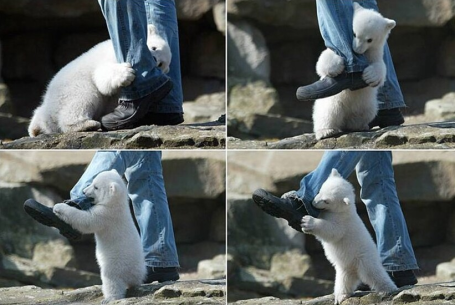 Paul's Conservation Minnesota Outlook for the Twin Cities and all of Minnesota:
Paul's Conservation Minnesota Outlook for the Twin Cities and all of Minnesota:
FRIDAY: Milder, coating of flurries late. Winds: SW 10-20. High: 33
FRIDAY
NIGHT:
Very light snow and flurries - coating to 1/2" possible (few inches closer to Duluth). Low:
20
SATURDAY: Mostly cloudy, cooler breeze. High: 25
SUNDAY: More clouds than sun, chilly. Low: 5. High: 16
MONDAY: More sun, grab a heavy coat. Low: 3. High: 11
TUESDAY: Coldest day of the week? Sunshine much of the day. Low: -7. High: 6
WEDNESDAY: AM sun, late-day flurries. Low: 0. High: 15
THURSDAY: Mostly cloudy, temperatures starting to rebound. High: 20
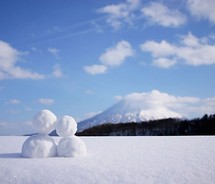
A Little Perspective
Don't let anyone from New York, Boston or Hartford give you a hard time for living in Minnesota. The Big Apple has seen 3 times more snow in January than we have (36" and counting). Hartford, CT just endured the snowiest month ever recorded (48"). Boston has picked up 50.4", just 5" less than MSP, but 6 major nor'easter have struck the northeast since Christmas. We've been consistently colder than average since December, but I count 10 subzero nights, roughly half the number we normally see by Feb. 1. We're enjoying (?) the snowiest winter in 7 years: 55.5" so far. According to Pete Boulay at the MN State Climate office, the last 10 years have brought an additional 23.6" from February into April. The big difference? A March snow usually melts within days, the result of a much higher sun angle. That said, odds favor at least 70" by April, with an outside shot at 80", which would be the most snow since 91-92 (84.1"). Fun with statistics.
For the first time this month we should sample 32 F later today. Never happier to see drips, puddles and liquid water. A clipper dumps 3-6" on the MN Arrowhead tonight, brushing us with a coating of snow. No New York-like snow blitzes in sight. Whew...
New Study Links Looming Food Supply Catastrophe and Global Warming. A
story from fastcompany.com: "
The numbers are in and 400 scientists from over 30 countries are making the case for increased funding for research on sustainable solutions to the global food shortage. Their collective report, titled The future of food and farming: challenges and choices for global sustainability, was released yesterday in the United Kingdom. With 9 billion people to feed by 2050, the report makes the case for significant increases in the funding of basic research, in order to develop innovative tools of nanotechnology and biotechnology to help stem the rise of food prices and stabilize supply and demand. And as the period from research to innovation and solution to implementation can often take years, the world risks finding solutions too late if such research is not funded immediately, says the report."
What's The Cost Of Climate Change? Pick a Number. From an
article at dailyclimate.org: "
Predicting the economic impact of climate change is not an easy endeavor. Climate models trying to assess the future impact of global-warming greenhouse gases are already enormously complex. Throwing the economic impacts of the myriad physical changes taxes the processing power of even the most advanced computers.
Scientists work around this by merging simplified versions of physical and economic models into what's known in the trade as "integrated assessment models." Three versions are widely used and account for the bulk of the research on the topic. But other researchers have developed other models and approaches, and the field remains in flux. Values are generally represented as a price per ton of carbon dioxide emitted. The higher the price, the greater the perceived impact of carbon emissions on society. The histogram here shows the central range of values (standardized to 2007 dollars) obtained by recent studies."
Where Are the Eclipse Deniers? "ONCE AGAIN, the Journal neglected to provide an alternative theory for the cause of lunar eclipses. What happened to balanced reporting that allows readers to decide for themselves? The Journal should adhere to a consistent policy and avoid favoring the consensus in astronomy as well as in climate science. Just because the vast majority of scientists agree that a lunar eclipse is caused by the Earth's shadow doesn't mean that newspapers should ignore earnest skeptics who believe that the moon is being swallowed by a three-legged toad."
MARK BOSLOUGH
Albuquerque
(published in the Albuquerque Journal, Dec. 23, 2010)
Revised Data Shows Feds Understate Costs Of Climate Change. These are incredibly complex calculations, but the dailyclimate.org dives in and tries to get a better handle on the obvious (and hidden) costs of climate change. Here's an excerpt from the
story: "
The cost of climate change impacts runs twice as high as previously estimated, according to revised data from a key economic model used by federal agencies. The preliminary analysis suggests that the number used by federal agencies to help justify emissions reductions is too low - making the cuts appear disproportionately expensive under the cost-benefit analysis required of federal rules. The revised numbers, say scientists and economists familiar with the research, are a sign that climate impacts likely will be more expensive than previous assumptions. Models used to generate current cost impacts contain gaps and, in some cases, outdated assumptions. As those models are refined and updated, they show greater economic harm as global temperatures rise in response to greenhouse gas emissions. "The big question is how accurate are those models," said Martin Weitzman, a Harvard University economics professor. "There's a lot of fuzziness to them." Current models, he added, "don't tend to give robust results."
Greenland Glaciers Spring Surprise.
Nasa's IceSat saw thickening (pink) in places and thinning (blue) in others between 2003 and 2006. The 2010 melt season in Greenland was 50 days longer than average, according to researchers. An excerpt from an
article at the BBC: "
A UK-led scientific team reports the finding in the journal Nature, following analysis of five years of satellite data on six glaciers. The scientists emphasise the icecap is not "safe from climate change", as it is still losing ice to the sea. Melting of the icecap would add several metres to sea level around the world. But it suggests that one reason behind the acceleration in glacier flow, which so concerned scientists when it was first documented in 2002, will prove not to be such a serious concern. "In their last report in 2007, the Intergovernmental Panel on Climate Change (IPCC) concluded they weren't able to make an accurate projection of future sea level because there were a couple of processes by which climate change could cause additional melt from the ice sheet," said Andy Shepherd from the University of Leeds."
Climate Change: Barack Obama Less Interested than Bush, Analysis Reveals. True, President Obama did stress energy, jobs and using alternative sources to reinvent our nation - but not one mention of climate change. The graph above: Aggregate mentions of 'climate change', 'global warming' and the 'environment' in the state of the union address since 1990. The U.K's Guardian newspaper has more
here: "
Barack Obama has paid less attention to climate change in his State of the Union addresses than any other president in the past 20 years, an analysis by a British researcher has found. Obama made no mention of the words climate change, global warming or environment in his hour-long speech on Tuesday night – when presidents typically employ the pomp and ceremony of the annual occasion to put forward their priorities before an American television audience in the tens of millions."
The World's Newest, Greenest City: Can It Work? An excerpt from an
article at Time magazine, focusing on a new city built from the ground up to be the "greenest" city on the planet. How are things working out? "
Back in 2007, the government of Abu Dhabi — a Middle Eastern emirate that controls 8% of the world's oil reserves — announced that it would build "the world's first zero-carbon city," a custom-designed settlement called Masdar. (The word means source in Arabic.) It would rely entirely on renewable energy — mostly solar — and would produce zero waste. It would be home to a university dedicated to the study of sustainability, as well as attract the best companies in clean tech. There would be no traditional cars inside the city — all transportation was to be via PRT vehicle — and it would use half the energy of a settlement of the same size. The urban layout — by the green-minded British architect Norman Foster — would combine classic Arab design with 21st century technology. Masdar would be a living lab for a greener, cleaner future and a bridge for Abu Dhabi as it prepared for a day when the oil ran out. "We will position Abu Dhabi as the hub of future energy," Sultan Ahmed Al Jaber, Masdar's CEO, told me in January 2008."





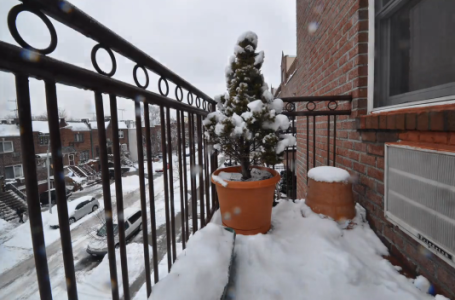



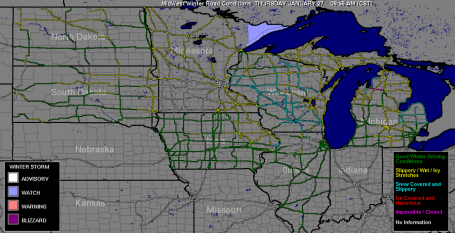
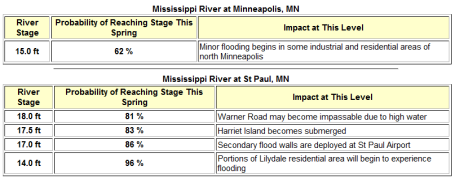
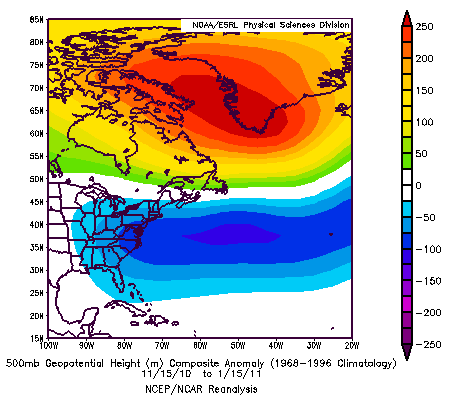
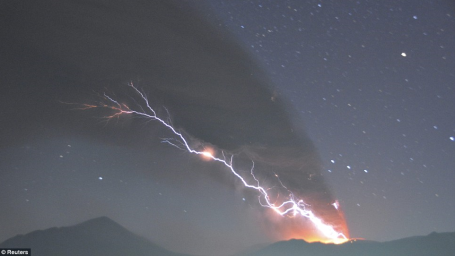
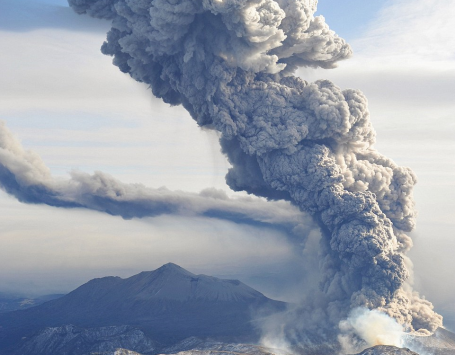
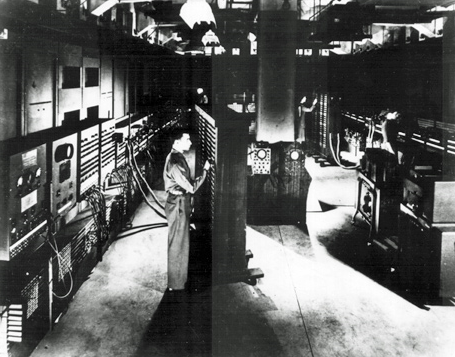


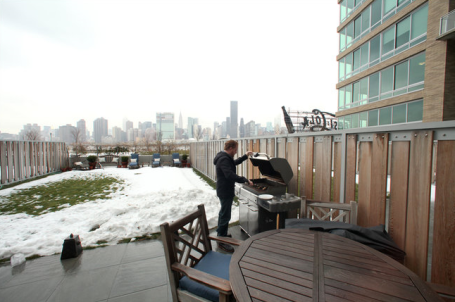
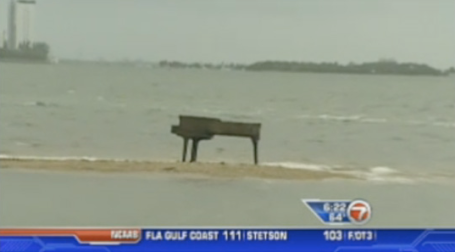



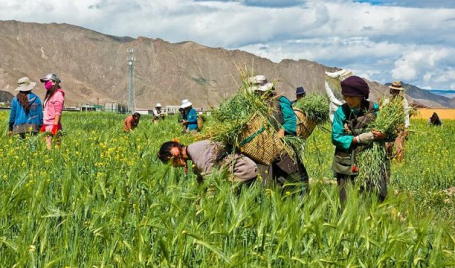
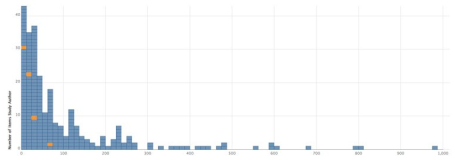



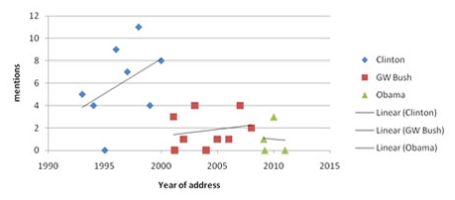

No comments:
Post a Comment